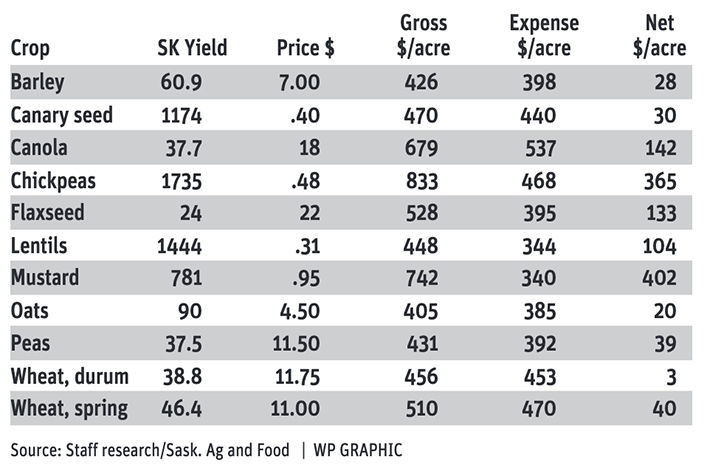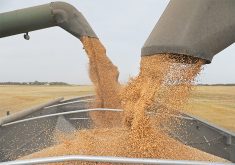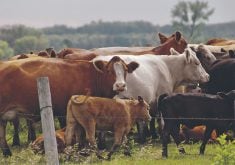Statistics Canada has come out with an estimate of crop production province by province. Using Saskatchewan estimated yields and the estimate of total cropping expenses from the Saskatchewan Ministry of Agriculture’s Crop Planning Guide for 2022, average net returns can be calculated for each crop.
As you can see in the table (below), based on this analysis, net returns fall into three categories: excellent, good and mediocre.
Mustard and chickpeas show excellent returns when average yields and prevailing prices are applied. Returns are good for canola, flaxseed and lentils. Meanwhile, peas and cereal crops provide only a modest return over total expenses.
Each part of this analysis has large room for error. Let’s start with the yield estimates. Many observers wonder how accurate satellite determination can be. For instance, does the vegetative analysis of lentil fields correlate to how well they are podded? Most of the yields are expressed in bushels per acre, while others are pounds per acre.
The price assumptions are taken from published sources for Saskatchewan origination, but prices vary and change each day. As well, the price doesn’t take into account grain that may have been contracted earlier at prices that may have been higher or lower.
Feed barley was assumed rather than malt. On lentils, the price for reds was used since that’s the dominant class. The three classes of mustard all have a somewhat different price, so the price used is a ballpark. Other prices assume top grades.

Many assumptions go into the expenses per acre calculated in the Crop Planning Guide. This is the full meal deal of expenses from seed, fertilizer and crop protection to machinery repair and land investment. In most cases, costs for the dark brown soil zone were plucked from the guide. However, mustard and chickpeas are predominately grown in the brown soil zone and that’s the cost used for those.
The yield difference and net return difference between spring wheat and durum largely comes from where they’re grown. Durum is more prevalent in southwest and west-central Saskatchewan, which again suffered from lack of rain this year.
The analysis has limitations. You can’t grow chickpeas at Prince Albert and many of the canola crops in the dry regions of Saskatchewan will have very low yields and therefore low returns. The best oat yields will be far above the 90 bushel an acre average, dramatically changing the net return.
However, this approach does provide a broad picture of relative profitability.
The ABC principle seems to be firmly in place — anything but cereals.















